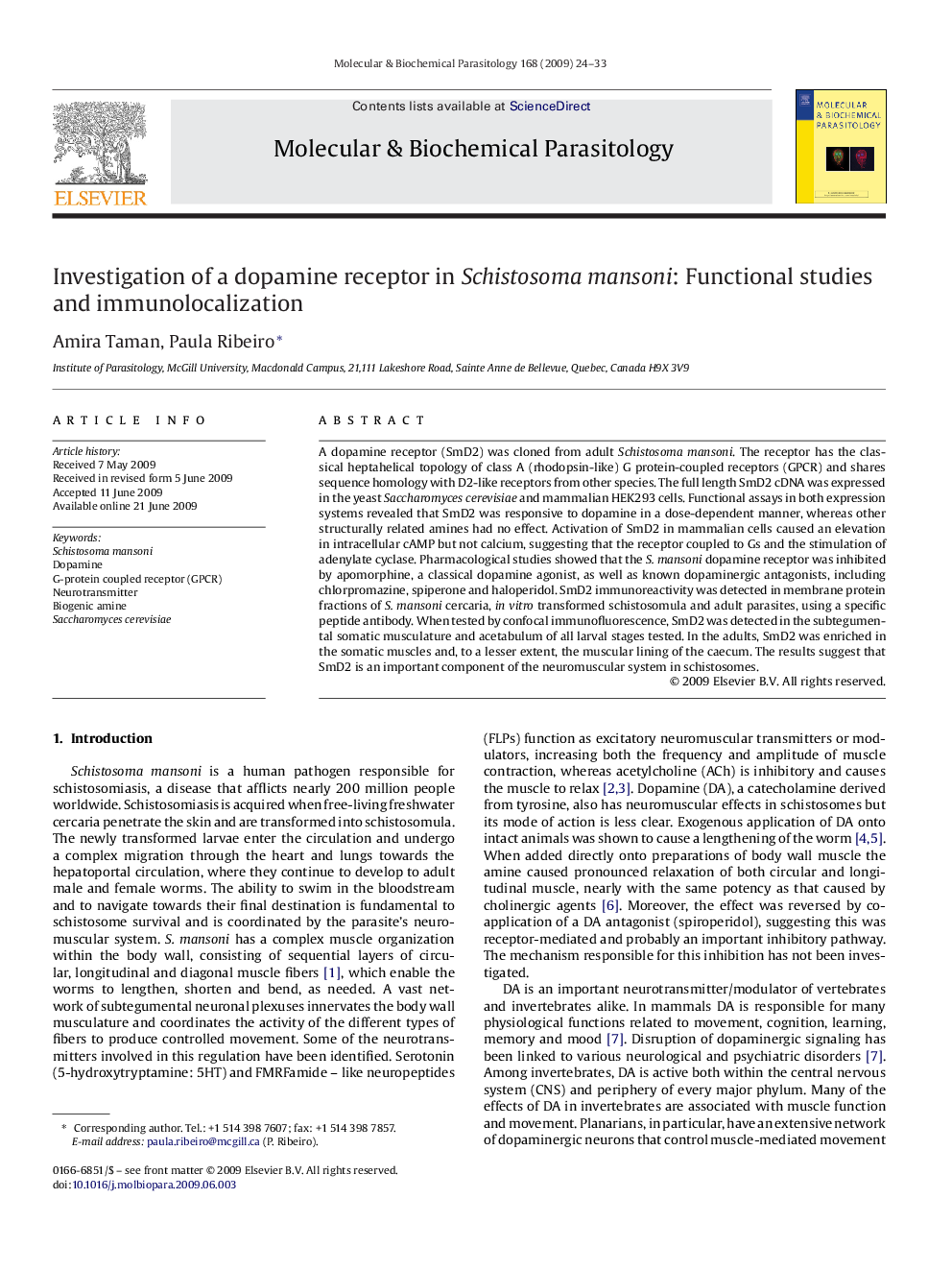| Article ID | Journal | Published Year | Pages | File Type |
|---|---|---|---|---|
| 5915926 | Molecular and Biochemical Parasitology | 2009 | 10 Pages |
Abstract
A dopamine receptor (SmD2) was cloned from adult Schistosoma mansoni. The receptor has the classical heptahelical topology of class A (rhodopsin-like) G protein-coupled receptors (GPCR) and shares sequence homology with D2-like receptors from other species. The full length SmD2 cDNA was expressed in the yeast Saccharomyces cerevisiae and mammalian HEK293 cells. Functional assays in both expression systems revealed that SmD2 was responsive to dopamine in a dose-dependent manner, whereas other structurally related amines had no effect. Activation of SmD2 in mammalian cells caused an elevation in intracellular cAMP but not calcium, suggesting that the receptor coupled to Gs and the stimulation of adenylate cyclase. Pharmacological studies showed that the S. mansoni dopamine receptor was inhibited by apomorphine, a classical dopamine agonist, as well as known dopaminergic antagonists, including chlorpromazine, spiperone and haloperidol. SmD2 immunoreactivity was detected in membrane protein fractions of S. mansoni cercaria, in vitro transformed schistosomula and adult parasites, using a specific peptide antibody. When tested by confocal immunofluorescence, SmD2 was detected in the subtegumental somatic musculature and acetabulum of all larval stages tested. In the adults, SmD2 was enriched in the somatic muscles and, to a lesser extent, the muscular lining of the caecum. The results suggest that SmD2 is an important component of the neuromuscular system in schistosomes.
Keywords
Related Topics
Life Sciences
Biochemistry, Genetics and Molecular Biology
Molecular Biology
Authors
Amira Taman, Paula Ribeiro,
